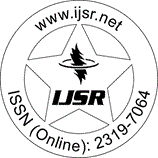Downloads: 4
India | Ayurveda | Volume 13 Issue 3, March 2024 | Pages: 1543 - 1547
Concept of Polycystic Ovarian Syndrome in Ayurveda Perspective
Abstract: Polycystic ovarian syndrome is endocrine disorder of HPO axis (hypothalamic pituitary ovarian axis). In India PCOD prevalence is 4.25% and in adolescence is 9.13%. The incidence of PCOD is more in obese women than in lean women. PCOD is life style disorder because of sedentary lifestyle & unhealthy food habits. Its characteristics are oligomenorrhea, amenorrhea, primary or secondary infertility, obesity, hyperandrogenism. PCOS is not a disease rather it is syndrome which includes multiple factors & multiple system. In ayurveda classic there is no direct co - relation with PCOS but it can be understood in terms of like anartva, aartavakshaya, nastaartava. Acharya Charka says that all the disease could not be named, so Vaidya should know the disease condition according to the involvement of dosha, dhatu and srotas. In the present study an attempt is made to understand PCOS with the help of hetu, lakshana, dosha, dhatu, samprapti in ayurveda.
Keywords: PCOS, oligomenorrhea, Anartva, aartavakshya, nastaartava
How to Cite?: Dr. Supriya, Dr. Padmasaritha K., Dr. Sindhu Umesh, "Concept of Polycystic Ovarian Syndrome in Ayurveda Perspective", Volume 13 Issue 3, March 2024, International Journal of Science and Research (IJSR), Pages: 1543-1547, https://www.ijsr.net/getabstract.php?paperid=SR24323094424, DOI: https://dx.doi.org/10.21275/SR24323094424
